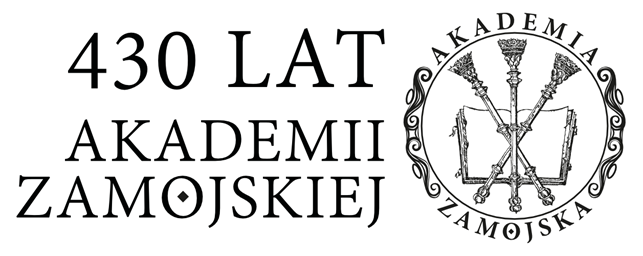Battiston, E., F. De Cindio, and G. Mauri. 1991. “OBJSA Nets: A Class of High-level Nets Having Objects as Domains.” In High-level Petri Nets: Theory and Application, edited by K. Jensen and G. Rozenberg, 189–212. Berlin, Heidelberg: Springer Berlin Heidelberg.
DOI: https://doi.org/10.1007/978-3-642-84524-6_6
Best, E., and R. Devillers. 2024. Petri Net Primer. A Compendium on the Core Model, Analysis, and Synthesis, Computer Science Foundations and Applied Logic: Springer Nature Switzerland.
DOI: https://doi.org/10.1007/978-3-031-48278-6
Biernacka, B., and K. Pancerz. 2024. “Modeling of Medical Procedures with Petri Nets over Ontological Graphs: an Example of Triage.” Procedia Computer Science 246:4825–4832. doi: 10.1016/j.procs.2024.09.348.
DOI: https://doi.org/10.1016/j.procs.2024.09.348
Borucka, A. 2020. “Logistic Regression in Modeling and Assessment of Transport Services.” Open Engineering 10 (1):26–34. doi: 10.1515/eng-2020-0029.
DOI: https://doi.org/10.1515/eng-2020-0029
Borucka, A., and P. Guzanek. 2022. “Predicting the Seasonality of Passengers in Railway Transport based on Time Series for Proper Railway Development.” Transport Problems 17 (1):51-61. doi: 10.20858/tp.2022.17.1.05.
DOI: https://doi.org/10.20858/tp.2022.17.1.05
Büker, T., and B. Seybold. 2012. “Stochastic Modelling of Delay Propagation in Large Networks.” Journal of Rail Transport Planning & Management 2 (1):34–50. doi: 10.1016/j.jrtpm.2012.10.001.
DOI: https://doi.org/10.1016/j.jrtpm.2012.10.001
David, R., and H. Alla. 2010. Discrete, Continuous, and Hybrid Petri Nets. 2nd ed. Berlin: Springer.
DOI: https://doi.org/10.1007/978-3-642-10669-9
Genrich, H.J., and K. Lautenbach. 1981. “System Modelling with High-Level Petri Nets.” Theoretical Computer Science 13 (1):109–135. doi: 10.1016/0304-3975(81)90113-4.
DOI: https://doi.org/10.1016/0304-3975(81)90113-4
Girault, C., and R. Valk. 2003. Petri Nets for Systems Engineering. A Guide to Modeling, Verification, and Applications. New York: Springer.
DOI: https://doi.org/10.1007/978-3-662-05324-9
Gómez-Pérez, A., M. Fernández-López, and O. Corcho. 2004. Ontological Engineering. With Examples from the Areas of Knowledge Management, e-Commerce and the Semantic Web. London: Springer-Verlag.
Jensen, K., and L.M. Kristensen. 2009. Coloured Petri Nets. Modelling and Validation of Concurrent Systems. Dordrecht – New York: Springer.
DOI: https://doi.org/10.1007/b95112
Longo, L., M. Brcic, F. Cabitza, J. Choi, R. Confalonieri, J.D. Ser, R. Guidotti, Y. Hayashi, F. Herrera, A. Holzinger, R. Jiang, H. Khosravi, F. Lecue, G. Malgieri, A. Páez, W. Samek, J. Schneider, T. Speith, and S. Stumpf. 2024. “Explainable Artificial Intelligence (XAI) 2.0: A Manifesto of Open Challenges and Interdisciplinary Research Directions.” Information Fusion 106:102301. doi: https://doi.org/10.1016/j.inffus.2024.102301.
DOI: https://doi.org/10.1016/j.inffus.2024.102301
Looney, C.G. 1994. “Fuzzy Petri Nets and Applications.” In Fuzzy Reasoning in Information, Decision and Control Systems, 511–527. Dordrecht: Springer Netherlands.
DOI: https://doi.org/10.1007/978-0-585-34652-6_19
Musen, M.A. 2015. “The Protégé Project: A Look Back and a Look Forward.” AI Matters 1 (4):4-12. doi: 10.1145/2757001.2757003.
DOI: https://doi.org/10.1145/2757001.2757003
Mussone, L., and R. Wolfler Calvo. 2013. “An Analytical Approach to Calculate the Capacity of a Railway System.” European Journal of Operational Research 228 (1):11–23. doi: 10.1016/j.ejor.2012.12.027.
DOI: https://doi.org/10.1016/j.ejor.2012.12.027
Neches, R., R. Fikes, T. Finin, T. Gruber, R. Patil, T. Senator, and W.R. Swartout. 1991. “Enabling Technology for Knowledge Sharing.” AI Magazine 12 (3):36–56.
Pancerz, K. 2012. “Toward Information Systems over Ontological Graphs.” In Rough Sets and Current Trends in Computing, edited by J. Yao, Y. Yang, R. Słowiński, S. Greco, H. Li, S. Mitra and L. Polkowski, 243–248. Berlin–Heidelberg: Springer.
DOI: https://doi.org/10.1007/978-3-642-32115-3_29
Pancerz, K., P. Grochowalski, and A. Derkacz. 2016. “W stronę ontologii miejscowości w Polsce: przykład województwa mazowieckiego.” Barometr Regionalny. Analizy i Prognozy 14 (3):137–144. doi: 10.56583/br.500.
DOI: https://doi.org/10.56583/br.500
Pancerz, K., P. Grochowalski, and W.A. Paja. 2017. “Two Simple Models of Petri Nets over Ontological Graphs: Extended Abstract.” Concurrency, Specification, and Programming. 26th International Workshop CS&P 2017, Warsaw, September 25–27.
Petri, C.A. 1962. “Kommunikation mit Automaten.” doctoral thesis, Fakultät für Mathematik und Physik, Technischen Hochschule Darmstadt.
Popova-Zeugmann, L. 2013. Time and Petri Nets. Berlin–Heidelberg: Springer.
DOI: https://doi.org/10.1007/978-3-642-41115-1
Reisig, W. 1985. Petri Nets. An Introduction. Berlin–Heidelberg: Springer.
DOI: https://doi.org/10.1007/978-3-642-69968-9
Szkoła, J., and K. Pancerz. 2017. “Petri Nets over Ontological Graphs: Conception and Application for Modelling Tasks of Robots.” In Rough Sets, edited by L. Polkowski, Y. Yao, P. Artiemjew, D. Ciucci, D. Liu, D. Ślęzak and B. Zielosko, 207–214. Cham: Springer International Publishing.
DOI: https://doi.org/10.1007/978-3-319-60837-2_17
Thomason, R. 2003. “Logic-Based Artificial Intelligence.” The Metaphysics Research Lab, Department of Philosophy, Stanford University, last modified 2024-02-27, accessed 2024-12-05, https://plato.stanford.edu/entries/logic-ai/.
Zadeh, L.A. 2012. Computing with Words. Principal Concepts and Ideas, Studies in Fuzziness and Soft Computing. Heidelberg: Springer.
DOI: https://doi.org/10.1007/978-3-642-27473-2
Zurawski, R., and M. Zhou. 1994. “Petri Nets and Industrial Applications: A Tutorial.” IEEE Transactions on Industrial Electronics 41 (6):567–583. doi: 10.1109/41.334574.
DOI: https://doi.org/10.1109/41.334574



 English
English
 Język Polski
Język Polski




